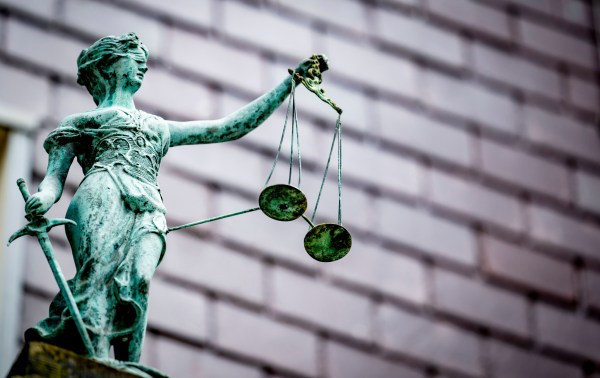My big question, as the Supreme Court kicked off Wednesday’s oral argument in Oklahoma Statewide Charter School Board v. Drummond, the high-profile “religious charter schools” case, was where exactly the justices would draw the battle line. I saw three possibilities.
State charter school laws have been around for more than 30 years. They enable nonprofits to operate public schools free of many rules that apply to the traditional government-run public schools. That list can include policies related to calendars and schedules, teacher pay and certification, curriculum, teaching methods, and more. From the very beginning, all charters have been secular. That’s been required by state laws. But a Catholic-affiliated applicant in Oklahoma put those provisions to the test, essentially arguing that it is anti-religious discrimination for a state government to allow any nonprofit other than faith-based groups to operate a charter consistent with its beliefs.
The likeliest battle line, I thought, would be whether charters are “state actors” (quasi-governmental entities). If so, they must be secular. But if they’re private nonprofits partnering with the government, they might be allowed to be faith-based.
But if the five more conservative justices (Justice Barrett is not participating in this case) quickly revealed that they believe charters are not state actors, I suspected the battle line would shift to possibly reviving some kind of “status-use” distinction. Oklahoma and the progressive justices would, I thought, tacitly concede that faith-based groups can operate charters while arguing that states had a right—to keep church and government separate—to prohibit those charters from using state money to do a variety of religious things.
The third possibility would come about, I thought, if the conservative justices made clear that religious groups must be allowed to run charters consistent with their faiths’ teachings. In this case, Oklahoma and the progressive justices would retreat for a final standoff, trying to preserve some ability of states to limit the scope of faith-based chartering. This might include narrowing the ministerial exception (the legal doctrine protecting religious entities’ key staffing decisions from government interference), ensuring state nondiscrimination statutes apply to religious charters, and/or preventing a maximalist view on faith-based groups’ participation in government programs.
I expected the three progressive justices to be firmly opposed with Justice Kagan taking the lead. I expected Justices Samuel Alito, Neil Gorsuch, and Clarence Thomas to see Oklahoma’s position as anti-religious discrimination. Even though Chief Justice John Roberts wrote for the majority in three major precedents seen as laying the groundwork for permitting faith-based charters, I wondered if he’d aim for a compromise or minimalist holding. And I didn’t know what to expect from Justice Brett Kavanaugh.
Ultimately, the primary battle line was whether charters are state actors. There was very little discussion of a status-use distinction; that concept appears to be kaput. When it became clear that the five conservatives were inclined to see charters as non-state actors, Oklahoma and the progressive justices pivoted to arguing that the longstanding concept of public education allowed state governments to require all public schools to be secular regardless of who runs them. But that didn’t seem to work either.
Oklahoma did its best to paint charters as of, by, and for the government: Charters must follow state content standards, administer state tests, maintain open-enrollment policies, and teach a state-vetted curriculum. The five conservatives appeared unpersuaded, seeming to agree that charter operators are private nonprofits with privately selected board and staff members and that these nonprofits run schools statutorily separated from state control. Justice Alito said he understood that charter laws were created to enable a subset of public schools different from government-run schools and free of state direction. That was clearly at odds, Alito noted, with Oklahoma’s argument that charters are indistinguishable from government-run public schools in the most important ways.
To my surprise, Justice Kavanaugh played possibly the key role in this area, perhaps in the entire argument. In a short, straightforward back-and-forth with the presenting attorney, he established that no student is forced to attend a charter, that the charter sector has a wide variety of school types, that only religious groups are excluded from participating in chartering, that states could not prefer religious charters over secular charters or prefer certain types of religious charters over others, that the state would continue to run secular public schools, and that the state regulates private schools without those schools being considered public. His point was clear: Chartering is a distinct, choice-based sector of public schools run by a constellation of independent private groups that are monitored—not operated—by the government.
Oklahoma was on the back foot after this; it was then staggered when Kavanaugh later implied that Oklahoma’s argument would mean that single-sex charters would have to be unconstitutional. And Oklahoma probably lost the case when its attorney clearly frustrated Justice Kavanaugh by failing to appreciate that its argument discriminates against faith-based groups contrary to a host of precedents.
When the state-action approach seemed to fail, Oklahoma and the three progressive justices tried a different tack, arguing that charters are a sector of public education and states simply have the right to decide that all public schools should remain religion-free. This was an interesting bit of legal jiujitsu: This argument is built on a sentence from the Carson decision (“Maine may provide a strictly secular education in its public schools”), a case understood as the other side’s strongest precedent. Some of Maine’s rural school districts lack a high school, so the state has historically paid for students in those districts to attend public or private schools elsewhere. But Maine prohibited religious schools from participating in this program. The court ruled that this was unconstitutional discrimination against faith-based organizations: If Maine allowed students to use the funds at secular private schools, it must allow students to use the funds at faith-based private schools. The court’s point in the lifted sentence is that if Maine wants to keep faith away from its public-school system, the state government can choose to have government entities run all public schools.
Oklahoma was trying to say that even if the majority finds that charters are nonprofit, non-state actors, the court could still find that charters are part of a public system that a state government can keep religion-free. But this gambit too seemed to fail. The conservative bloc seems likely to say, yes, government-run public schools must be secular but the public schools in the charter sector are not the government’s schools. They are owned and run by private nonprofits, and the state can’t discriminate against faith-based nonprofits. Said another way, Oklahoma’s attempted use of that Carson sentence misses that “provide” and “its” are operative words.
Throughout the argument, Justices Elena Kagan and Sonia Sotomayor tried to make the case that charters were controlled by the government, and they raised interesting hypotheticals that implied worrisome consequences if faith-based charters were permitted. They also repeatedly flagged that permitting faith-based charters would all but force the court to invalidate portions of a federal law related to charter school funding. But they seemed to get little traction. When Kagan claimed that the state runs charters, the attorney simply replied that this was untrue: The state provides contractual oversight; that’s not control.
Justice Ketanji Brown Jackson mostly led the charge for the progressive justices, particularly with regard to the argument about an entirely secular system of public education. I expect Jackson will ultimately write for the three. But it will be a dissent. In the end, there were simply too many germane precedents—related to Amtrak, private contractors, an Olympic committee, resurfacing playgrounds, tuition tax credits, tuitioning programs—that bolster the pro-religious-charters argument. And members of the conservative majority expressed concern that Oklahoma’s preferred holding would threaten the participation of religious nonprofits in a raft of social service programs. The recent Roberts-authored Fulton decision protecting a faith-based foster-care provider came up more than I anticipated.
After the hearing, my years-old prediction was unchanged. Chief Justice Roberts will write for the majority in favor of faith-based charters. The opinion will say something like, “Oklahoma, and other states for that matter, did not have to pass charter school laws. They did not have to enable independent nonprofits to operate public schools. But once they did so, they could not single out religious groups for exclusion.”
There is one final twist in this case worth mentioning.
Over the last few months, I’ve participated in several debates on this subject and talked to many reporters and advocates about it. Interestingly, the most frequent argument against faith-based charters wasn’t legal. It was political, even prudential: If the court permits faith-based charters, a bunch of blue states will get rid of charters entirely because they’d rather kill chartering than allow religiously affiliated charters. Said another way, opponents of religious charters cited the power of progressive state legislatures as a reason for the court to say no to religious charters.
But on two occasions during the oral argument, Justice Gorsuch cleverly turned that around. He implied a point often made by University of Notre Dame professor Nicole Stelle Garnett: State charter laws differ, and a test for determining whether a charter is a state actor could conclude that they are not in most states but are in some. Gorsuch was suggesting that state legislatures unhappy about a decision in favor of religious charters could alter their laws to put charters under the thumb of the state government, turning their charters into state actors. That would mean that those charters would have to be secular. In this way, the power of progressive state legislatures is a reason the court could feel comfortable permitting faith-based charters.
Gorsuch could write about this in a concurrence, but it might well appear in the chief’s majority opinion. It would be something like: State charter laws gave nonprofit public-school operators independence from the state. That means, in their current form, most state charter laws can’t discriminate against faith-based nonprofits. But if a state really wants to discriminate against faith, it could turn its charters into wards of the government.








Please note that we at The Dispatch hold ourselves, our work, and our commenters to a higher standard than other places on the internet. We welcome comments that foster genuine debate or discussion—including comments critical of us or our work—but responses that include ad hominem attacks on fellow Dispatch members or are intended to stoke fear and anger may be moderated.
With your membership, you only have the ability to comment on The Morning Dispatch articles. Consider upgrading to join the conversation everywhere.